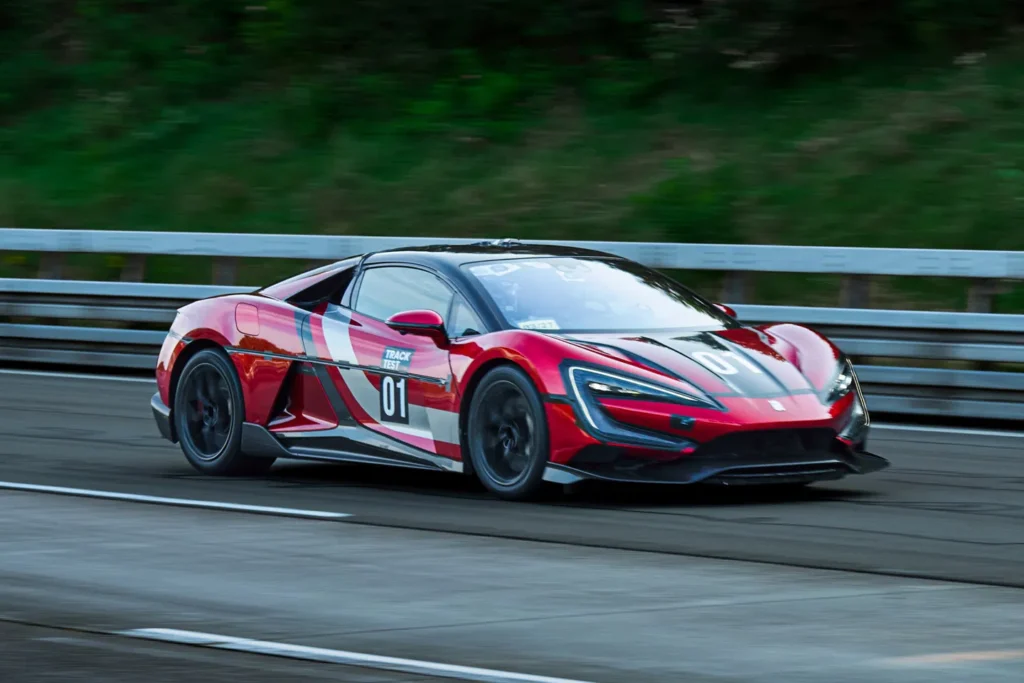
Just a few days ago, we spoke about the 2,977 hp (2,220 kW) BYD Yangwang U9 Track Edition and fast forward to today, and it has become the world’s fastest electric car.
It uses four 555 kW (744 hp) motors, each capable of spinning up to 30,000 rpm and delivering independent torque vectoring. Combined, peak output is said to exceed 3,000 hp, with a power-to-weight ratio of 1,217 hp per tonne. That alone puts it in another league.
Adding to the engineering showcase, it debuts the first mass-produced 1200V ultra-high-voltage system, something beyond the 800V setups we’re used to hearing about. It also gets Yangwang’s ‘DiSus-X Intelligent Body Control System’ to keep the car planted, along with semi-slick tyres co-developed with Giti. An unusual detail is the use of a special lubricant between the wheel and tyre to reduce slip during extreme acceleration and braking.
Earlier this month at the ATP test track in Papenburg, with racing driver Marc Basseng at the wheel, the U9 Track Edition recorded a top speed of 472.41 km/h (293.29 mph). That’s an astonishing achievement for any road car, let alone one powered by batteries. There wasn’t an official timing body present, but the VBox footage makes the number hard to dispute. For context, the Rimac Nevera holds the verified record at 268 mph (431 km/h), while the Aspark Owl has hit 270mph (434 km/h) unofficially. On paper, Yangwang’s U9 has what it takes to claim the crown if it seeks official certification.
The run wasn’t without drama, though. Unlike other VMax attempts that look eerily calm, the U9 appeared unstable at the top end. Basseng wisely backed off rather than push past 472 km/h, as the car began to drift away from its line.
Yangwang insists this effort has “redefined” the idea of a sustainable supercar. It’s hard to argue that the benchmark hasn’t shifted, even if the U9 Track Edition might need more than an optional carbon fibre splitter before it dares a serious crack at the 300 mph (483 km/h) mark.

